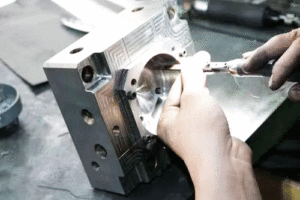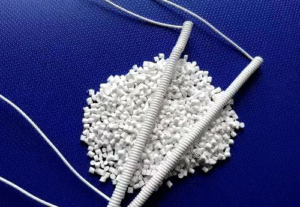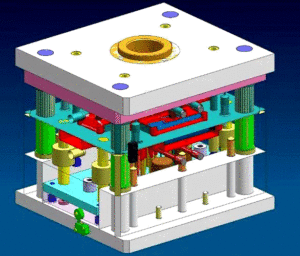
Polishing Treatment for Plastic Molds
Polishing Treatment for Plastic Molds With the widespread application of plastic products, such as daily-use items and beverage packaging containers, there is often a requirement
Gas-assisted injection molding technology is an emerging plastic injection molding technology. Its principle is to use high-pressure gas to produce a hollow section inside the plastic part. And use gas pressure to replace plastic injection pressure to eliminate product sink marks and complete the injection molding process. The gas-assisted injection molding process mainly includes: plastic melt injection, gas injection, and gas pressure holding.
According to the difference of melt injection volume, it is divided into short shot and full shot. In the short shot, the gas first pushes the melt to fill the cavity and then maintains the pressure. While in the full shot, the gas only maintains the pressure effect.
Compared with ordinary injection molding process, gas-assisted injection molding technology has incomparable advantages. It is known as a revolution in injection molding process and is widely used in almost all plastic parts fields such as home appliances, automobiles, furniture, and daily necessities. In the field of home appliances, TV housings, especially large-screen color TV front housings, are one of the earliest and most widely used products using gas-assisted injection molding technology.
(1) When designing, first consider which wall thickness needs to be hollowed out and which surface sink marks need to be eliminated. Then consider how to connect these parts to become airways.
(2) Large structural parts: thinned across the board and thickened locally to form airways.
(3) The air passage should be evenly distributed to the entire cavity according to the main material flow direction. At the same time, closed-circuit air passages should be avoided.
(4) The cross-sectional shape of the air passage should be close to a circular shape to make the gas flow smoothly. The cross-sectional size of the air passage should be appropriate. If it’s too small, it may cause gas permeation. If it’s too large, it may cause weld marks or air pockets.
(5) The airway should extend to the final filling area (usually on the non-appearance surface). But it does not need to extend to the edge of the cavity.
(6) The main airway should be as simple as possible and the branch airway length should be as equal as possible. The end of the bronchus can be gradually reduced to prevent gas acceleration.
(7) The airway can be straight but not bend (the fewer bends, the better). And the corners of the airway should use a larger fillet radius.
(8) For multi-cavity molds, each cavity needs to be supplied by an independent gas nozzle.
(9) If possible, there is a second option not to let the gas advance.
(10) The gas should be confined to the airway and penetrate to the end of the airway.
(11) Precise cavity size is very important.
(12) It is very important to cool all parts of the product evenly.
(13) When using the gate for air intake, the balance of flow is very important for uniform gas penetration.
(14) Accurate injection melt volume is very important, and the error of each injection volume should not exceed 0.5%.
(15) Set up an overflow well at the last filling point, which can promote gas penetration. What’s more, it can increase the rate of airway hollowing, eliminate hysteresis marks, and stabilize product quality. The valve gate is added between the cavity and the overflow well to ensure that the final filling occurs in the overflow well.
(16) The small gate can prevent the gas from flowing back into the sprue when the gas nozzle is air intake.
(17) The inlet gate can be placed on a thin wall and keep a distance of more than 30mm from the inlet to avoid gas penetration and backflow.
(18) The gas nozzle should be placed on the thick wall and at the farthest place from the final filling.
(19) The direction of the air outlet of the gas nozzle should be as consistent as the material flow direction.
(20) Keep the melt flow front at a balanced speed while avoiding the formation of a V-shaped melt flow front. When using short-material injection, the volume of the unfilled cavity before air intake should not exceed half of the total airway volume.
(21) When using full material injection, the pressure, we should refer to the specific volume and temperature relationship diagram of the plastic. So that half of the total volume of the airway is approximately equal to the volume shrinkage of the plastic in the cavity.

Polishing Treatment for Plastic Molds With the widespread application of plastic products, such as daily-use items and beverage packaging containers, there is often a requirement

Injection Molding Techniques for TPE and TPR Injection Molding Techniques for TPE and TPR 1. Dry the TPE and TPR material before injection molding It

Winter Maintenance Measures for Injection Molding Machines As winter approaches and temperatures gradually drop, a cold chill envelops the earth. While ensuring personal warmth, it

Assessment Regulations for Mold Trial Exceeding 3 Times Assessment Regulations for Mold Trial 1. Purpose The purpose of this regulation is to standardize the work of